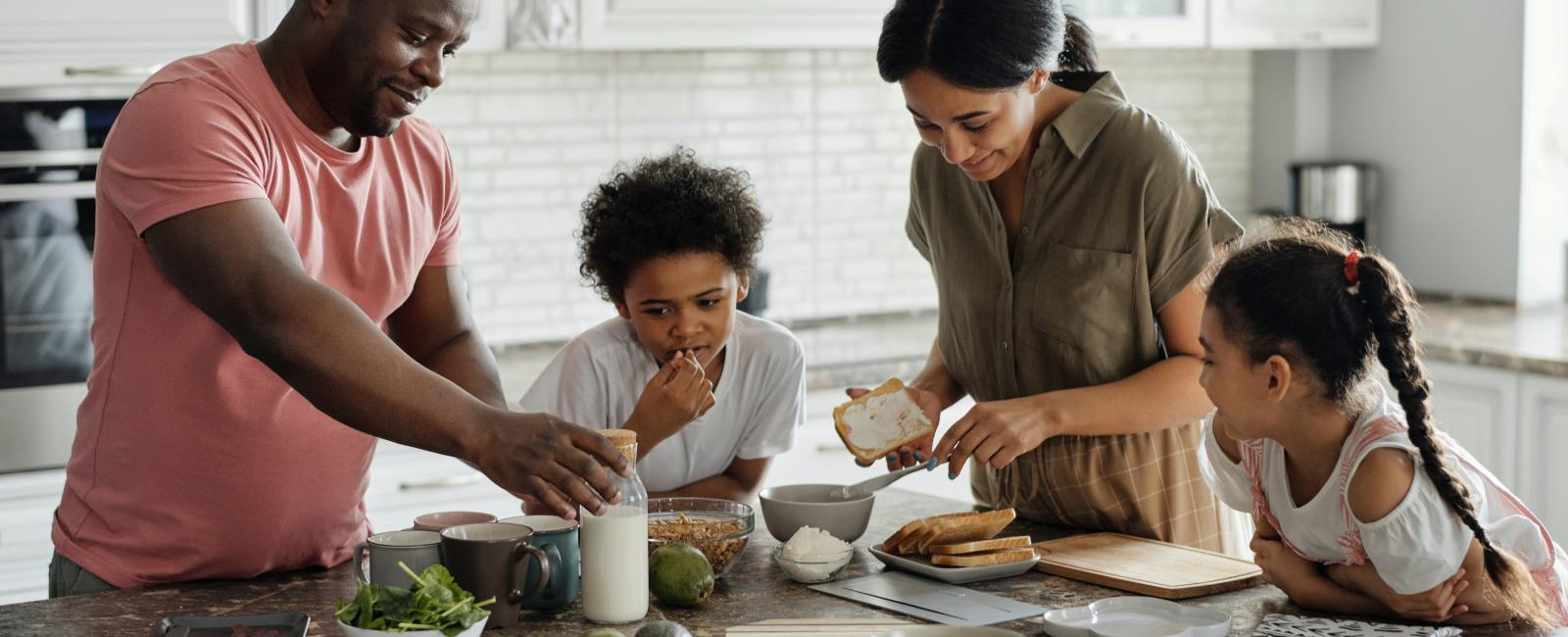10 Easy Ways To Reduce Food Waste

Sounds familiar? After a stay in the fridge, you toss out your leftovers after all… Or, that mushy pear in the fruit bowl gets silently promoted to the trash can instead of the blender for a smoothie.
Tossing out food means throwing away money, water, gasoline, and whatever it took to grow, process, store, and transport that food. Rotting food in landfills produces methane, a greenhouse gas 30 times more harmful than CO₂.
40% of all food worldwide does not make it to the dining table: rejected for shape or colour, damaged during transport—or forgotten at the consumer’s home.
Consumers like you and I account for about a QUARTER of all food waste worldwide, so together we can make a big difference!
Below we share ten tips for wasting less food at home. From newbie to pro, we promise everyone will find a few eye-openers here, and smart tricks to save money and time, eat healthier, get more creative in the kitchen.
1. Shop smart: hack your mind
 Take a “shelfie”, a picture of the contents of your fridge, so you’ll know your stock while at the store. That way you’ll no longer buy too much “just to be sure”.
Take a “shelfie”, a picture of the contents of your fridge, so you’ll know your stock while at the store. That way you’ll no longer buy too much “just to be sure”.
Don’t stock up big time, but go to the store more often, if you have the time. You’ll get a breath of fresh air, buy exactly what you feel like today, and you might bump into a friend.
But if you are busy, do buy in bulk. A shopping list based on your meal plan keeps you from loading up on unnecessary offers that you may already regret as you unpack at home.
Buy that “ugly” cucumber or pick that box with some broken biscuits before the staff has to throw it out “because no one wants it”.
2. Buy from the farm, nearby
Buy at the market, the farm or a pick-up point. There you can get exactly how much or how little you need, often along with helpful tips on preparing the food and using it all up.
Buy from farmers through a local delivery service. That not only saves you time but cutting out the middle man saves money as well as food waste, as every logistical step means tossing out good food.
3. Restaurants: ask for smaller portions and/or take-out boxes
If you know that a restaurant serves a ton of fries with their (veggie)burger, ask for less. If you offer to pay the usual price, they’ll usually agree: no cash register hassle, fewer ingredients used, and the same profit.
If you can’t finish your meal, ask if they can pack it up for take-out. You might even have a box or jar on you…
4. Storage: fridge, freezer or ambient?
Fruit and vegetables will last longer when stored correctly—which as a rule of thumb is the way the supermarket presents them.
In the Dutch and Belgian climate, that means: potatoes, onions, garlic, tomatoes, cucumbers, apples, and pears: outside the fridge. Lettuce, soft fruit: in the fridge.
You can freeze almost anything. Make small portions, flat packs defrost faster and put the freezing date on them.
Keep your fridge organized. First In First Out: Put the newest in the back, so that the oldest is in the front ready for the taking.
Nudge yourself: you’re much more likely to use up leftovers in glass containers instead of opaque plastic boxes.
5. What do those date labels actually mean?
“Past the date” is one of the top reasons why food is thrown out, in no small part because many people don’t know what the dates on their food actually mean…
The Netherlands and Belgium both use THT and TGT dates. What exactly do they mean?
THT date = Best Before Date. This date is used on long-shelf-life, processed products, i.e. everything in cans, jars or cartons. Manufacturers usually set that date extra early to prevent any risk or liability. These products are still good many months after the date.
So if you come across a product in your pantry that is past its best-before date, you can trust your own eyes and nose, as grandma and grandpa did.
TGT date = Use By Date. This date is printed on short-life, fresh products, such as fresh juices, sliced vegetables, fish and meat. It’s best to stick to these use-by dates. But a day past the label won’t kill you: just smell and decide for yourself.
For your country’s food date system, check with your national food safety authority.
6. Cook just enough OR way more than you need today
Remember how much you, your family members and guests usually eat, and adjust the amounts of ingredients accordingly.
You can also prepare large batches of pasta, soup or stew and refrigerate them for easy, healthy meals for the rest of the week, with a different sauce or salad every day to add variety. Or freeze them for later in the month.
Leftover food can easily be used in soups, pies, curries and stews. Some people have a fixed leftovers day for that. The BBC has fantastic tips.
Eat the skin. From apples to fish to chicken, their outer layer is packed with fibres, vitamins, minerals, antioxidants, proteins and healthy fats. Potato wedges with skin from the oven are way yummier. Salmon seared skin-side down takes five minutes of not touching it and voilà! You can make a basic stock for soup from bones with meat or vegetable scraps on them that no jar from the supermarket can compete with…
7. Give away food
Surprise your neighbours, colleagues, friends or visitors with a box of your culinary abundance. Research shows that 40% of people would be happy with the food from their neighbours, so don’t be shy.
Are there any streetside library boxes or food-sharing boxes in your neighbourhood? They can often be found along the pavement in someone’s front yard. Through these, neighbours give away books, detergents, canned food and more to their neighbours. Depending on the box type and the weather, you may also place fresh ingredients or your (frozen) dishes in it. It is often gratefully taken home within hours.
8. Use food for non-food purposes, pamper your skin or your lawn
Let’s reinstate grandmother’s lifehacks! A mushy avocado with some honey makes for a delightful face mask. Coffee grounds with olive oil are an invigorating body scrub. Coffee grounds scattered over your lawn prevent mosquitoes from laying eggs. And so on. Google “grandma’s lifehacks”, it’s amazing and fun.
9. Make your own compost!
You can easily compost fruit and vegetables in your garden or on your balcony - and it doesn’t smell. Read up on the do’s and don’ts and you’ll have your very own, pristine compost ready for your garden or planters in a few months.
If you prefer more convenience: there are more and more composting machines the size of an air fryer that dry your kitchen waste (and sometimes even bioplastics) in a few hours and grind them into odourless compost or ecochips.
10. Experiment and become as independent again as your grandma once was
 Canning is cool, super healthy and not difficult at all. White cabbage + salt in mason jar = sauerkraut. Throw in some chilli peppers, garlic and fish sauce and you have kimchi, the Korean superfood.
Canning is cool, super healthy and not difficult at all. White cabbage + salt in mason jar = sauerkraut. Throw in some chilli peppers, garlic and fish sauce and you have kimchi, the Korean superfood.
Pickling, drying, fermenting—these are simple techniques to make your food (leftovers) last much longer. Youtube is full of instructional videos. Or throw a Pickling Party for your friends!
What it all ultimately comes down to is:
Before throwing anything away, ask yourself “What can I do with this black banana/limp celery/way too many radishes?” If you put your question to Google—“ingredient X Y Z recipe” — you will be presented with a smorgasbord of irresistible ideas.
Explore, experiment and enjoy!
Future-Proof Foodie Challenge
Join our Future-Proof Foodie challenge together with Ekomenu. Get started for free with tips from our experts, tasty recipes and a community of enthusiastic participants.
Download the app, sign up and receive a temporary 50% discount on your first organic meal box!
Then follow this link from your mobile to join the challenge.


